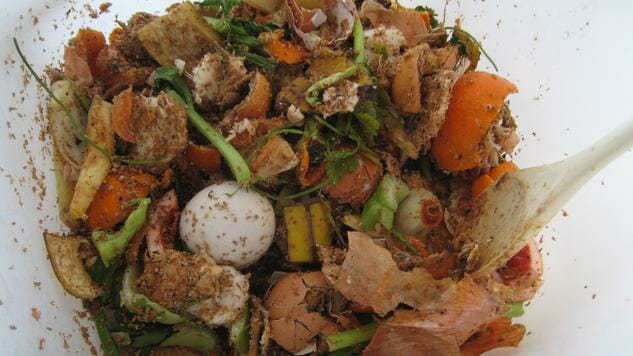Wild Culture: Fermenting Your Food Waste with Bokashi

Usually, we attribute fermentation with food and drinks. But fermentation can also play a role at the end of the food life cycle as well. We’re talking about your food scraps.
If you’re not tossing your food scraps in the rubbish bin (I shudder to think that you would be), then you are probably doing some kind of composting to ensure that those food scraps get put to good use, instead of rotting away in landfills, leaching methane into the air. Composting happens in a variety of ways, and the most common ones that people tend to be used to are “backyard” or “onsite” composting – the kind of composting that happens if you have outdoor space – and vermicomposting, a method that uses worms, and is popular for people living in smaller spaces, like in urban areas.
But when we remove oxygen from the composting process, the compost turns anaerobic, which in turn, leads to fermentation, and a whole other way to deal with food scraps. Bokashi is one of these methods, a popular way to process food waste, particularly for those with not a lot of room for a traditional composting setup.
Bokashi is a Japanese word meaning fermented organic matter, and that’s exactly what the bokashi method of processing food scraps does. As with any kind of fermentation, bokashi requires a few microorganisms to work, lactobacillus bacteria (the same stuff that gives yogurt and pickles their funky taste), phototrophic bacteria and yeast. These are sprinkled onto the food scraps, in the form of an inoculated material (often referred to as bokashi bran, which you can buy, or even make yourself). Once the food scraps and microorganisms are in an airtight bucket, the fermentation process begins.
Bokashi doesn’t require a lot of equipment, one of the main reason it has so many proponents; if you have room for an airtight bucket, then you have room to ferment your food waste. The other big draw is that you can ferment essentially anything, including many items that you might otherwise keep from your worm bin, like meat and dairy. Because of this easy and practical method, bokashi has many converts.
“I broke up with worms to date bokashi,” says Rebecca Louie, the woman behind the blog The Compostess and the author of Compost City: Practical Composting Know-How for Small-Space Living, a book devoted to encouraging people to compost in all kinds of spaces. Don’t worry, she still has her worms, but Louie is a big proponent of bokashi, particularly for urban dwellers, and she has even gotten her officemates to embrace having a bucket at work.
-

-

-

-

-

-

-

-

-

-

-

-

-

-

-

-

-

-

-

-

-

-

-

-

-

-

-

-

-

-

-

-

-

-

-

-

-

-

-

-








































